There's nothing quite like the rich aroma of a freshly baked loaf wafting through your kitchen, and this Rye Sandwich Bread Recipe takes that experience to the next level. Crafted with the nutty depth of rye flour and a perfectly soft, airy crumb, this homemade bread is the ideal foundation for everything from a classic pastrami on rye to a simple, melty grilled cheese. Unlike store-bought versions that often fall short on flavor and texture, this Rye Sandwich Bread Recipe delivers an unbeatable balance of heartiness and softness. Best of all? Even if you’re new to baking, this Rye Sandwich Bread Recipe is surprisingly easy to master—no complicated techniques, just foolproof steps for bakery-quality results at home.
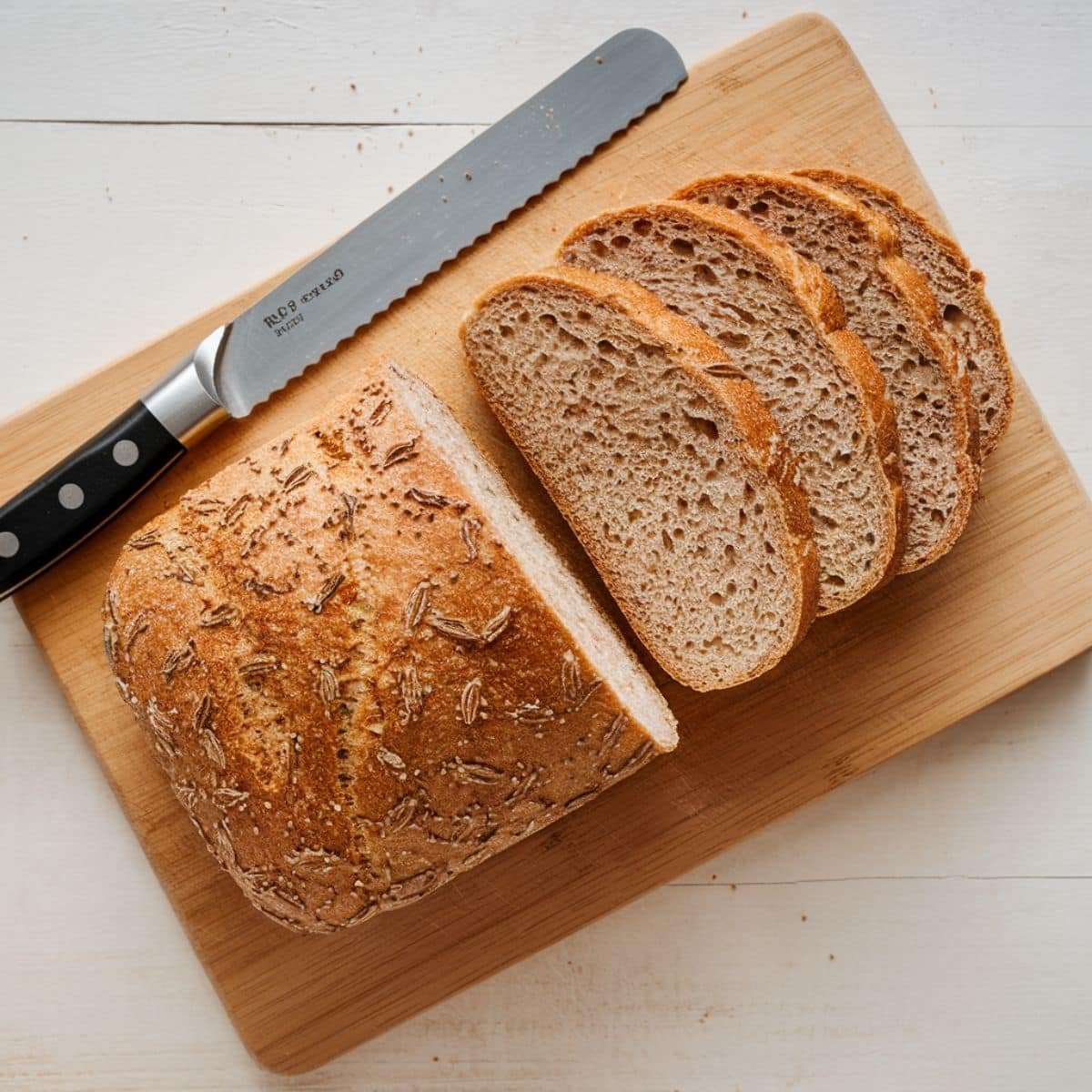
Why This Rye Bread Recipe Stands Out
Rye Sandwich Bread Recipe has deep roots in European baking traditions, particularly in Scandinavian and Eastern European cuisines where hearty, flavorful breads are central to daily meals. What makes this particular rye sandwich bread recipe special is its perfect balance – it delivers authentic rye flavor while maintaining a soft texture ideal for sandwiches.
Many traditional rye breads can be dense and heavy, but this recipe creates a lighter loaf that still carries that distinctive rye character. The combination of rye and bread flour provides structure while keeping the crumb tender. Adding caraway seeds brings that classic deli bread flavor, though they're completely optional if you prefer a milder taste.
This Rye Sandwich Bread Recipe pairs beautifully with everything from cold cuts and cheese to hearty soups and stews. It's also excellent toasted with a spread of salted butter or topped with avocado for a simple breakfast.
Jump to:
Ingredients
The Bread:
- Bread flour – Creates structure and helps achieve a lighter texture
- Medium rye flour – Provides that distinctive rye flavor and color
- Sugar – Feeds the yeast and adds subtle sweetness
- Salt – Enhances flavors and controls yeast activity
- Active dry yeast – The leavening agent that makes our bread rise
- Vegetable oil or melted butter – Adds richness and helps keep the bread soft
- Warm water – Activates the yeast and forms the dough
- Caraway seeds (optional) – Adds traditional rye bread flavor
- Molasses (optional) – Deepens the color and adds complexity
- Vital wheat gluten (optional) – Helps create better structure in rye breads
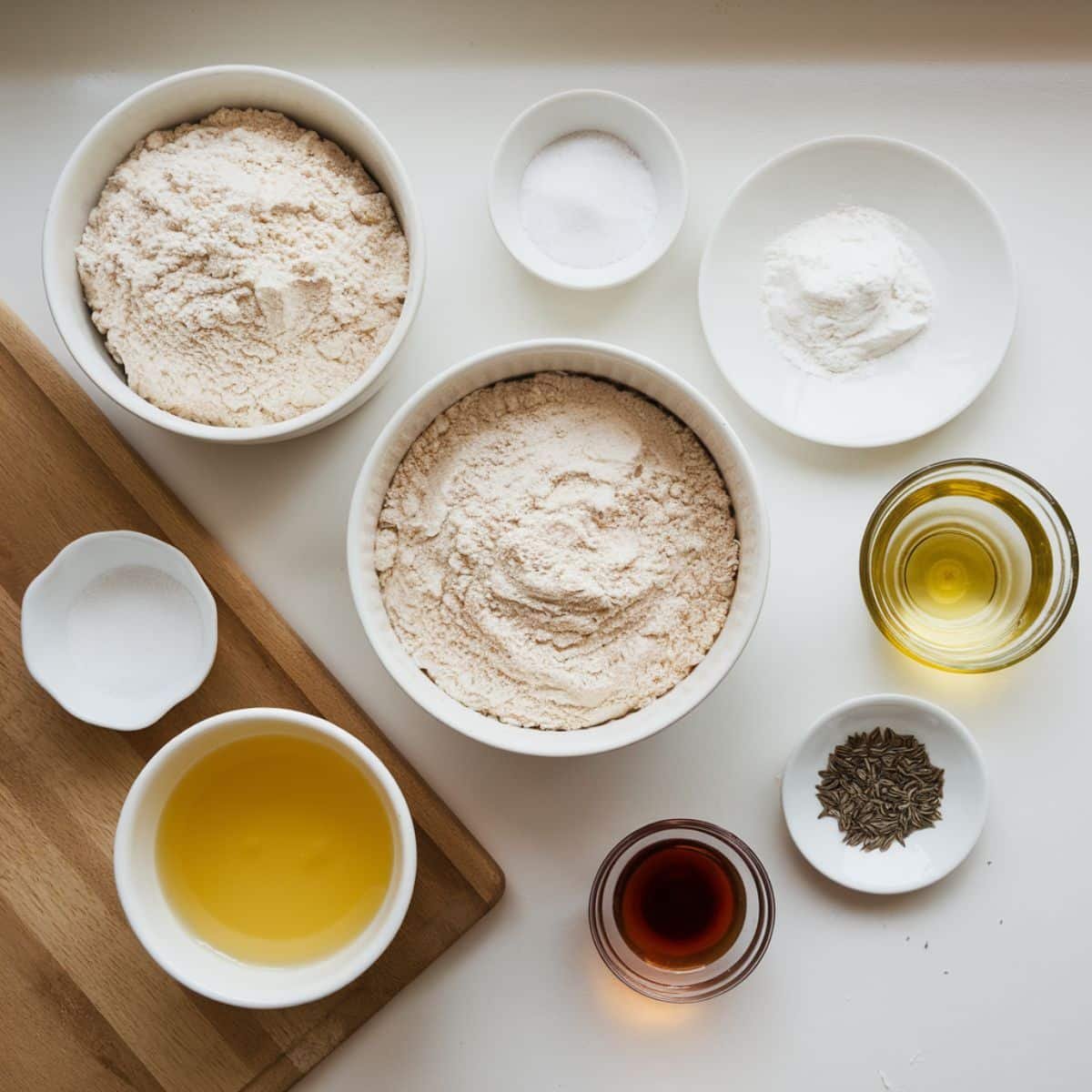
The Topping (Optional):
- Egg white mixed with water (for egg wash)
- Additional caraway seeds
- Coarse salt
See recipe card for quantities.
Instructions
Prepare the Dough
- Activate the yeast by combining it with warm water and sugar until foamy (about 5-10 minutes), then add molasses if using.
- Mix all dry ingredients in a large bowl, create a well in the center, and pour in the yeast mixture and oil or melted butter.
- Knead the dough for 8-10 minutes until smooth and elastic (either by hand or with a stand mixer), then place in an oiled bowl, cover, and let rise in a warm place until doubled in size (60-90 minutes).
Shape and Second Rise
- Once doubled, gently punch down the dough, shape it into a loaf, and place it in a greased 9×5-inch loaf pan.
- Cover loosely and allow to rise again for 45-60 minutes until the dough has risen about 1 inch above the rim of the pan.
- During the last 20 minutes of rising, preheat your oven to 375°F and prepare any toppings (egg wash, caraway seeds, or coarse salt).
Bake and Cool
- If desired, brush with egg wash and add toppings, then bake at 375°F for 35-40 minutes until golden brown and sounds hollow when tapped.
- For extra texture, spray the oven with water during the first 5 minutes of baking, and if the top browns too quickly, tent with foil.
- Once baked, remove from the oven, turn out onto a wire rack, and allow to cool completely for at least 1 hour before slicing to prevent gumminess.

- Prepare the Dough: Knead the dough until smooth and elastic, ensuring good gluten development.

- Shape and Second Rise: Shape the dough into a loaf and allow it to rise until slightly above the pan.
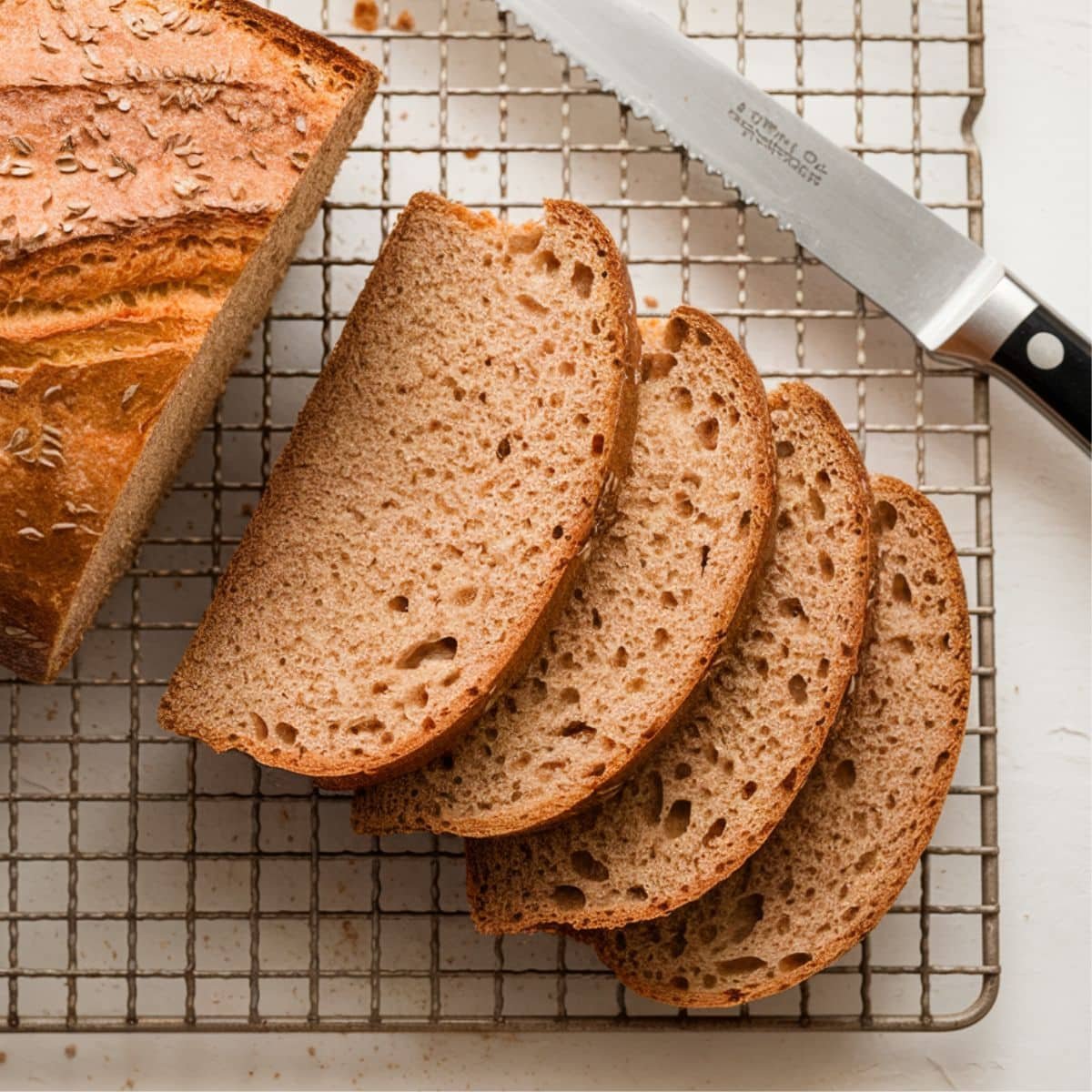
- Bake and Cool: Let the baked rye bread cool completely before slicing to achieve the best texture.
Equipment For Rye Sandwich Bread Recipe
- Loaf pan: A 9×5-inch loaf pan works perfectly. A metal pan creates a better crust than glass or ceramic.
- Kitchen scale: For precise measuring, especially of flour and water.
- Stand mixer with dough hook: Not essential but makes kneading easier, especially with sticky rye dough.
- Bench scraper: Helpful for handling the dough without adding too much flour.
- Instant-read thermometer: To check water temperature and bread doneness (internal temperature should reach 190-195°F).
- Bread knife: A good serrated knife makes slicing homemade bread much easier.
Hints & Expert Baking Tips
- Measure flour correctly: For best results, weigh your flour if possible. If measuring by volume, fluff the flour first, then spoon it into the measuring cup and level with a knife.
- Rye flour absorbs water differently: Rye dough should be slightly tacky. If it's too dry, add water 1 tablespoon at a time; if too wet, add bread flour 1 tablespoon at a time.
- Be patient with kneading: Rye dough won't feel the same as white bread dough when properly kneaded. It will be slightly tackier but should still be elastic.
- Temperature matters: The ideal room temperature for bread rising is around 75°F. On cold days, create a warm environment by placing the dough near a preheating oven or on top of a refrigerator.
- The poke test: To check if your dough has risen enough, poke it gently with your finger. If the indentation fills back slowly but not completely, it's ready for the next step.
- Vital wheat gluten is helpful: Because rye flour has less gluten than wheat flour, adding vital wheat gluten helps create better structure and a lighter texture.
Recipe Variations
- For a lighter rye bread, use light rye flour and omit the molasses.
- For darker, more traditional rye, use dark rye flour and include the molasses.
Sourdough Rye Sandwich Bread
- Replace half the yeast with 1 cup of active sourdough starter.
- Reduce the water by ¼ cup to account for the liquid in the starter.
- Expect a longer rise time and more complex flavor.
Seeded Rye Variation
- Add 2 tablespoons each of sunflower seeds and flaxseeds to the dough.
- Sprinkle the top with a mixture of seeds (sesame, poppy, flax) before baking.
Marbled Rye Sandwich Bread
- Divide the dough in half after the first rise.
- Add 1 tablespoon cocoa powder or coffee powder to one half.
- Roll out both portions, layer them, and roll up for a beautiful swirl effect.
Deli-Style Rye
- Double the caraway seeds and add 1 tablespoon dried onion flakes to the dough.
- Brush with egg wash and sprinkle generously with caraway seeds before baking.
Storage
Fridge Storage
- Homemade rye sandwich bread recipe will stay fresh at room temperature for 2-3 days when stored in a bread box or paper bag.
- Avoid storing in plastic bags at room temperature, which can make the crust soft and encourage mold.
- For longer storage, refrigerate in a sealed container for up to 1 week.
Freezing Instructions
- Allow the rye sandwich bread recipe to cool completely before freezing.
- Slice before freezing for convenience – this allows you to take out only what you need.
- Wrap tightly in plastic wrap, then aluminum foil or place in a freezer bag.
- Freeze for up to 3 months.
- Thaw slices at room temperature or toast directly from frozen.
Refreshing Stale Bread
- To revive day-old bread, sprinkle with a little water and heat in a 350°F oven for 5-10 minutes.
- Stale rye bread makes excellent croutons, bread pudding, or breadcrumbs.
The Secret to Bakery-Quality Rye Sandwich Bread Recipe: A Hidden Tradition
Every great Rye Sandwich Bread Recipe has a secret, a little trick passed down through generations of bakers who know how to bring out the deepest flavors in every loaf. If you’ve ever wondered why deli-style rye sandwich bread recipe has that rich, slightly tangy depth, here’s the answer: a simple yet powerful technique called the "rye sour." The night before baking, mix ¼ cup rye flour with ½ cup water and a pinch of yeast and let it rest at room temperature. As it ferments overnight, this mixture unlocks an intense, complex flavor that transforms your homemade loaf into something truly exceptional. The next day, incorporate it into your dough, and watch how it enhances the texture and taste—giving your Rye Sandwich Bread Recipe that authentic, old-world charm. It’s a small step with a big payoff, bringing your bread from good to deli-quality perfection.
FAQ
Is rye bread good for sandwiches?
Yes, rye bread is excellent for sandwiches! Its sturdy texture holds up well to moist fillings without getting soggy. Rye sandwich bread offers a distinct nutty flavor that complements both cold cuts and hot fillings. The slightly chewy texture and ability to stay fresh longer than white bread makes homemade rye bread recipe ideal for preparing sandwiches in advance. Many deli-style sandwiches traditionally use rye bread for this reason.
What is the best sandwich for rye bread?
The classic Reuben sandwich is the perfect match for rye bread. The combination of corned beef, Swiss cheese, sauerkraut, and Russian dressing on rye creates a legendary flavor profile. Other excellent options include pastrami with mustard, turkey with coleslaw, tuna melts, or grilled cheese. The robust flavor of a homemade rye sandwich bread recipe stands up beautifully to strong flavors while adding its own distinctive taste to the sandwich.
What makes rye bread different?
Rye sandwich bread recipe is different because it's made with rye flour, which contains less gluten than wheat flour, resulting in a denser texture and distinctive flavor. Its slightly sour, earthy taste comes from the rye grain. Traditional rye sandwich bread recipes often include caraway seeds, adding a unique aromatic quality. Rye bread typically has a darker color, longer shelf life, and lower glycemic index than regular white bread.
What pairs well with rye bread?
Rye bread pairs wonderfully with robust cheeses like Swiss, cheddar, and gouda. It's perfect with cured meats including pastrami, corned beef, and smoked salmon. Tangy toppings like sauerkraut, pickles, and mustard complement rye sandwich bread's distinctive flavor. For breakfast, try rye with avocado, cream cheese, or butter and jam. The earthy notes in rye bread recipes also make it an excellent companion to hearty soups and stews.
Bake, Slice, and Savor – Your Homemade Rye Sandwich Bread Recipe Journey Begins!
Baking your own Rye Sandwich Bread Recipe is more than just making bread—it's about crafting something truly special, a loaf that blends the bold, nutty essence of rye with a soft, sandwich-perfect texture. And once you’ve mastered this go-to recipe, the possibilities are endless!
Try experimenting with different flours, seeds, or even a touch of honey for a unique twist.
But why stop here? If you're feeling adventurous, take your bread-baking skills to the next level with our Rustic Mediterranean Olive Bread Recipe, packed with briny olives and a crisp, golden crust. Or, if you’re in the mood for something sweet, don’t miss our Delicious Carrot Cake Bread Recipe – Ready in 1 Hour!, a perfect treat for any time of day.
The joy of homemade bread is in the experience—mixing, kneading, baking, and finally, slicing into a warm, fragrant loaf made with your own hands.
I’d love to hear how your Rye Sandwich Bread Recipe turns out! Drop a comment below with your experience, tweaks, or even new variations you’ve discovered. Let’s keep the love of baking alive—one delicious loaf at a time. Happy baking!
Related
Looking for other recipes like this? Try these:
Pairing
These are my favorite dishes to serve with Rye Sandwich Bread Recipe

Easy Rye Sandwich Bread Recipe
Equipment
- Loaf pan 9×5-inch for best results
- Stand mixer Optional, for easy kneading
- Kitchen scale Ensures precise measurements
- Instant-Read Thermometer Helps check doneness (190-195°F)
- Bench scraper Assists with dough handling
- Bread knife Essential for clean slicing
Ingredients
- 2 ½ cups Bread Flour Provides structure
- 1 ½ cups Medium Rye Flour Adds authentic rye flavor
- 2 tablespoon Sugar Feeds the yeast
- 1 ½ teaspoon Salt Enhances flavor
- 2 ¼ teaspoon Active Dry Yeast Or instant yeast
- 2 tablespoon Vegetable Oil Or melted butter
- 1 ¼ cups Warm Water 100-110°F
- 1 tablespoon Molasses Optional for deeper flavor
- 1 tablespoon Caraway Seeds Optional for classic rye taste
- 1 tablespoon Vital Wheat Gluten Optional improves structure
Instructions
- Activate yeast by mixing with warm water and sugar. Let sit until foamy.
- Mix all dry ingredients in a bowl, then add yeast mixture and oil.
- Knead dough until smooth and elastic (8-10 min). Let rise 60-90 min.
- Punch down, shape into a loaf, and place in a greased loaf pan.
- Let dough rise again for 45-60 minutes. Preheat oven to 375°F.
- (Optional) Brush with egg wash, add toppings. Bake for 35-40 min.
- Let cool on a wire rack for at least 1 hour before slicing.

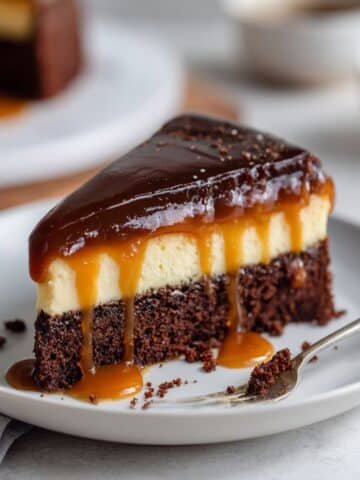


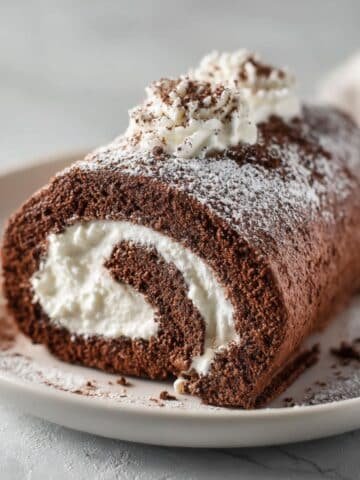






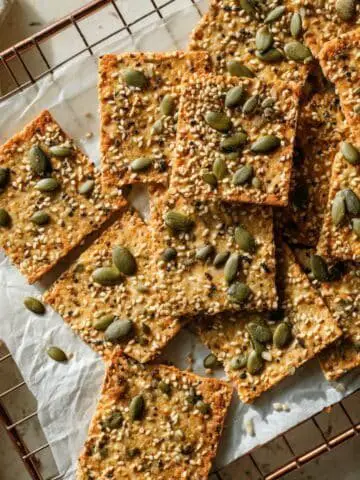
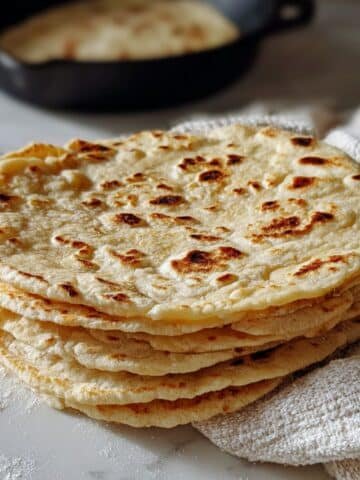
Leave a Reply